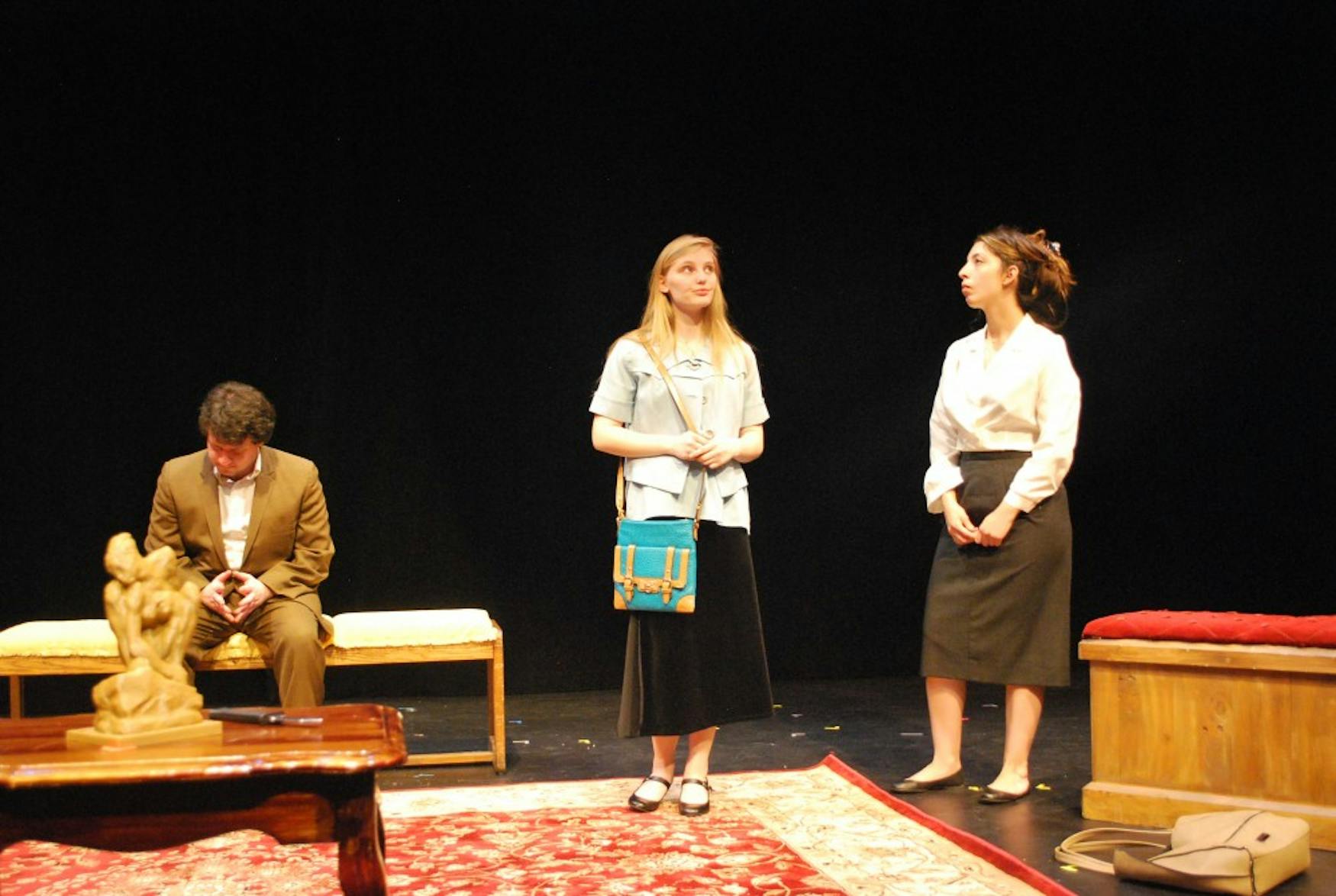‘No Exit’
Barbara Rugg’s ’15 senior production of the classic play No Exit used Jean-Paul Sartre’s simple yet brilliant idea of hell to put on a thought-provoking production.
The play’s sparse set allows for both the symbolic discussions in the play and the confined physical setting.
As each character enters the room, they express an expectation of encountering a torturer or grotesque imagery, rather than a simply decorated room. As the play goes on, it becomes clear that these characters recently died and have reached their place in the afterlife—a room in hell. Garcin and Estelle contemplate what tortures await them next, but Inez is the first to realize the intended plan; these three people have been chosen to live together for eternity because they are the perfect people to torture each other.
In a slightly overheated room—poking fun at the concept of burning in hell—the worst thing these characters encounter is how the others make them confront their past sins.
The play conveys these past lives and remembrances subtly; while the actors genuinely convey the emotions necessary with confronting a lost past, the lights dim slightly and soften to show that they are looking into the past, or into what is currently happening on earth.
The characters eventually begin to question how they could have gotten to the room. Garcin and Estelle romanticize their actions, denying any wrongdoing that could have led them to hell. Through the course of the play, Inez drives them to admit to their past actions and confront who they were.
The actors play their parts expertly, particularly Yeshua, whose character was more wild and devilish in her confrontations with the others. Inez tells the others, “I prefer to choose my own hell,” and that is exactly what she does.
—Editor’s Note: Gabriela Yeshua ’17 is the editorial cartoonist for the Justice.



Please note All comments are eligible for publication in The Justice.